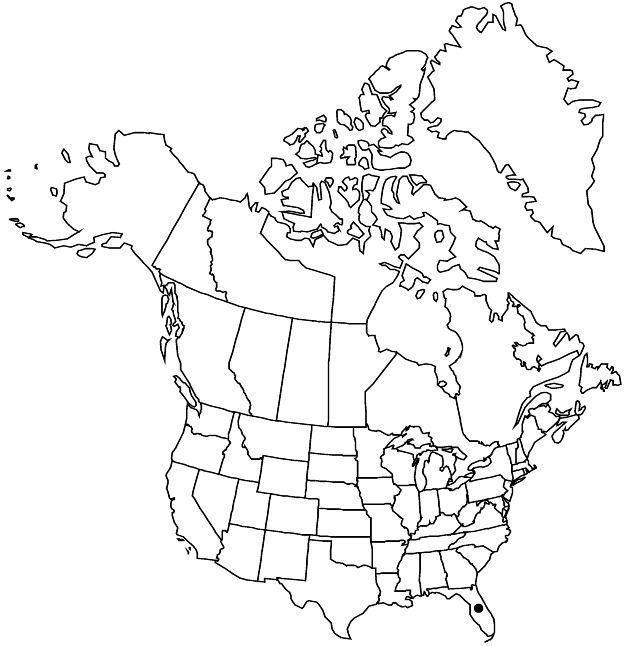Euphorbia porteriana
Phytologia 67: 48. 1989.
Herbs, usually annual, sometimes perennial, with slender to occasionally thickened taproot, 5 mm diam.. Stems erect to ascending, sometimes slightly woody at base, not mat-forming, 15–60 cm, usually glabrous, young branches rarely very sparsely short pubescent. Leaves opposite; stipules usually distinct, occasionally connate basally, triangular, entire or 2–4 parted, apically ciliate, 0.3–0.4 mm, usually glabrous, rarely very sparsely short pubescent; petiole 0.5–1.5 mm, usually glabrous, rarely very sparsely short pubescent; blade ovate, oval, elliptic, oblong-elliptic, or linear-elliptic, 4–12 × 1–7 mm, base asymmetric, rounded or subcordate, margins usually entire, rarely sparsely serrate, apex obtuse to acute, sometimes mucronate, surfaces abaxially often purple or red, adaxially green, usually glabrous, rarely very sparsely short pubescent; 3-veined from base, only midvein conspicuous. Cyathia solitary at distal nodes; peduncle 0.5–1.1 mm. Involucre turbinate to campanulate, 0.7–1 × 0.8–1 mm, usually glabrous, rarely very sparsely short pubescent; glands 4, brown, slightly concave, elliptic-oblong, 0.1–0.2 × 0.3–0.6 mm; appendages white or pink to dark red, usually oblong or flabellate, occasionally rudimentary and forming narrow rim at edge of gland, (0–)0.1–0.2 × 0.4–1 mm, distal margin entire or crenulate. Staminate flowers 8–14. Pistillate flowers: ovary glabrous, subtended by triangular calyxlike structure; styles 0.4–0.6 mm, 2-fid 1/2 length. Capsules broadly ovoid, 1–1.5 × 1.7–2.1 mm, glabrous; columella 1–1.4 mm. Seeds reddish brown, ovoid, 4-angled in cross section, 0.7–1 × 0.6–0.7 mm, smooth or obscurely wrinkled.
Phenology: Flowering and fruiting year-round.
Habitat: Pine rocklands, coastal scrub, open hammocks.
Elevation: 0–10 m.
Distribution

Fla.
Discussion
Euphorbia porteriana is found in Miami-Dade County and on Big Pine Key, Monroe County. This species is closely related to E. blodgettii, E. garberi, and E. serpens. The capsules of E. porteriana are almost always completely glabrous, but the authors have seen three specimens with just a few scattered hairs on the keels. A. Herndon (1993) synonymized E. porteriana var. keyensis under E. garberi because of its uniformly hairy capsules, and that treatment is followed here.
Selected References
None.